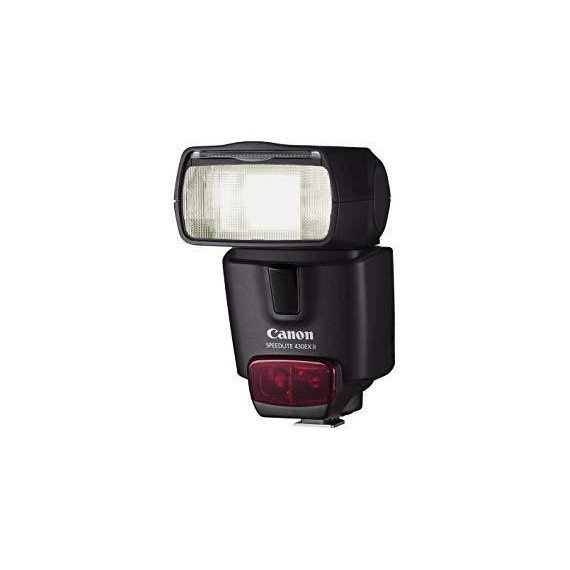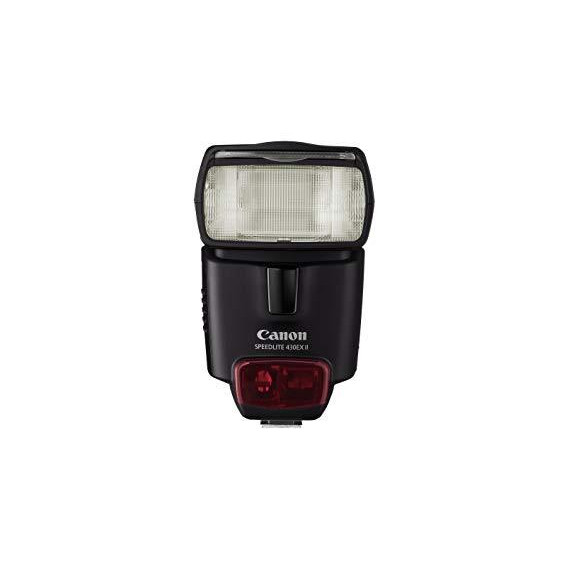Patrick Perdu
This is the one I always have with my 7D - granted, because the pocket where I store it is slightly too tight for my 580EXII and I dont need the optical master mode with the 7D. What this has: ● ETTL, i.e. automatic flash exposure measurement Through The Lens, when paired with a Canon camera, including the rebels or the G15 and such. ● Manual mode. Obvious but it is worth mentioning if only because it is very useful, especially for macro. ● Guide number of 43 - i.e. decent maximum power for a small flash. ● Optical remote slave mode that supports ETTL (not just manual) when not attached to the camera and paired with an optical master. More on that below. ● A swivel head ● A zoom that matches that of the Canon camera to maximize the illumination of the target when zooming out. This only when the flash is mounted on the camera and aimed straight forward. What it does not have: ● An external power port for additional batteries - would have been nice, but not such a problem. ● Multi mode where it could output a string of flashes at programmable interval - that can be useful for some physics experiments but not much more. ● Master mode for optically controlling other remote flash - more on this below. ● A swivel head that can go 180 degrees to the right. It can to the left but not to the right. Usually not an issue, especially since when mounted on a camera held in portrait with a battery grip, the flash in on the left of the camera, therefore the important angles are to the right of it (at that time: to the top) I use it mostly with a 7D which features a popup flash with optical master for the Canon remote flash system. Why is that so nice? Much of the problem with on-camera flash, whether built-in or added, is that the light comes from the direction of the camera, thereby giving red eyes and flattening everything. (This is the reason why the usual advice about having the sun in the back of the photographer is a bad idea.) To avoid that, the obvious solution is to have the light come from the side, so as to have modelling of the subject shape. There are several ways to achieve that: you could position your subject 5 feet from a north window. Assuming you have a north window and it is daytime that would be preferred, but you dont need a flash for that. You can shoot the flash sideways or upwards to a white wall or ceiling, hence the swivel head. This gives you a very nice, soft light not coming from the camera - usually a great idea, however the loss of light can be huge, it is hard to control spillage (light splattering everywhere) and it tends to get a color cast if the wall or ceiling is not white, or if there is a big colored object in the room. Then of course you need a wall or a ceiling. What else? Move the flash away from the camera. You will need to control the flash so that it fires when the shutter is open, and you will have to control the flash power. Synchronization can be optical (synced on another flash), cabled or radio. Cabled and radio involve more hardware. Exposure control can always be manual - this flash here supports ETTL over optical wireless, meaning you can use your flash as if it were attached onto your camera, although actually it is not. You will need a master for that, either another flash your cameras popup flash. If you have a 7D or a 70D you are in luck. Is optical remote control perfect? No: for it to work you will need the 430ExII to see the masters light, i.e. a reasonable combination of dark location, short distance and line of sight: it works very well indoors but if you try triggering a flash hidden behind a tree 50 away in broad daylight it will not fire. There are other issues but they will not kick in unless you mix and match multiple different flash - if you are interested, please check out my review about the Yongnuo YN560-II which has the details of how to make it work in such a setup. Practically: ● Set your flash to remote controlled by holding the zoom button down for 4s. This is not obvious and poorly documented. ● Select the group (use default A unless you have multiple flash) ● Select the channel (pick one between 1 and 4 and stick with it) ● Set your master flash as such: If you use a 580ExII you set it as remote by holding the zoom button down as well, then select the master mode and the same channel as on your 430ExII. If you use a 7D, go to internal flash menu, select the remote flash capability and the same channel as on your 430ExII. Try it out, it is really worth the effort: it can be set up in minutes and you will have a nice new tool in your belt. I would recommend the 430ExII for any Canon shooter, regardless of the camera as long as if features a hot shoe. Beginners will have a very easy tool shooting in ETTL to take pictures without too much hassle and will have room to grow into it. More seasoned photographers probably already have a heap of assorted gear to choose from. For them the 430 can be a nice, less expensive backup flash or a travel flash as I am using it. It comes with a soft pouch; you may want to consider procuring some gels for it (at least CTO and half CTO) and maybe a small soft box. There are excellent books about these flash and how to use them. Syl Arenas "Speeliters handbook" is one about the technical aspects of Canon gear, while Niel van Niekerks "Off-camera flash" deals more with the corresponding lighting techniques. I recommend both. Please dont hesitate to ask me questions either directly or through comments.













